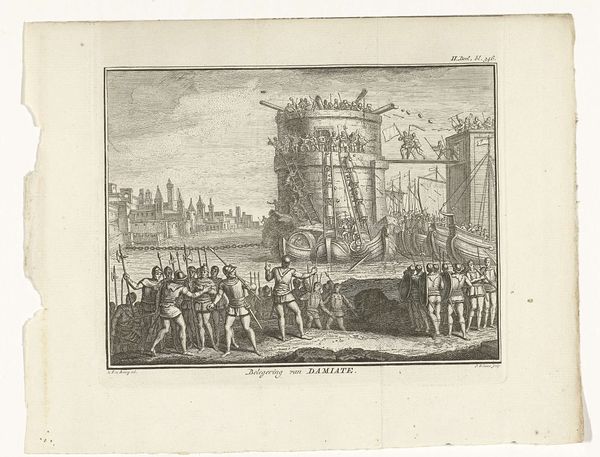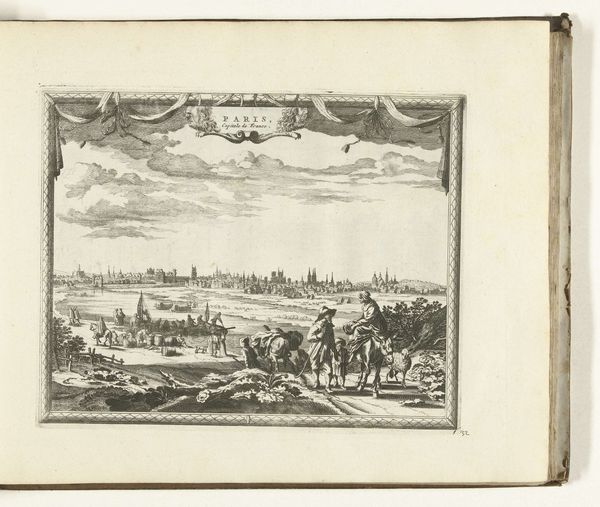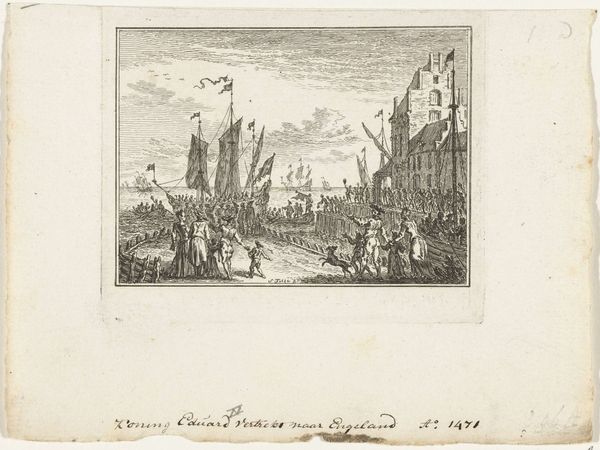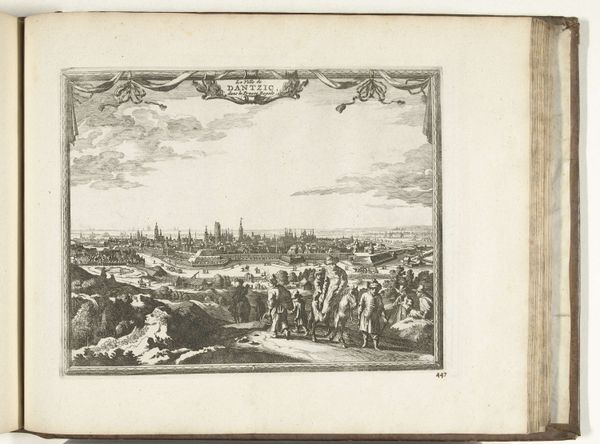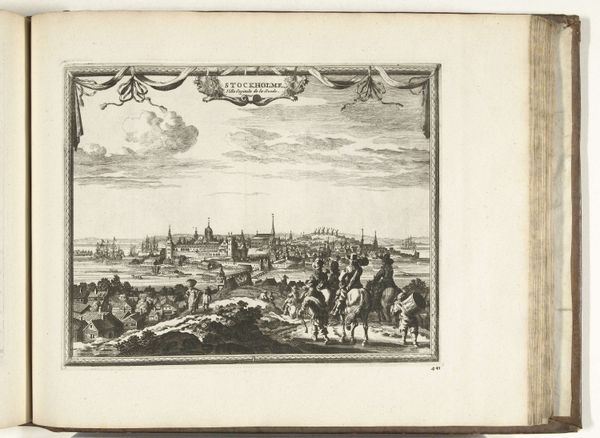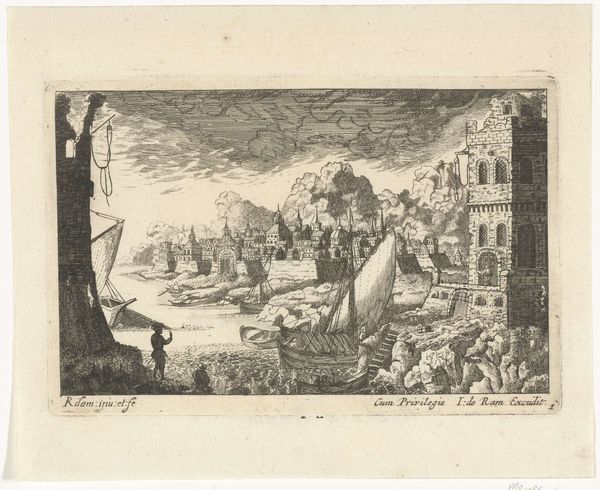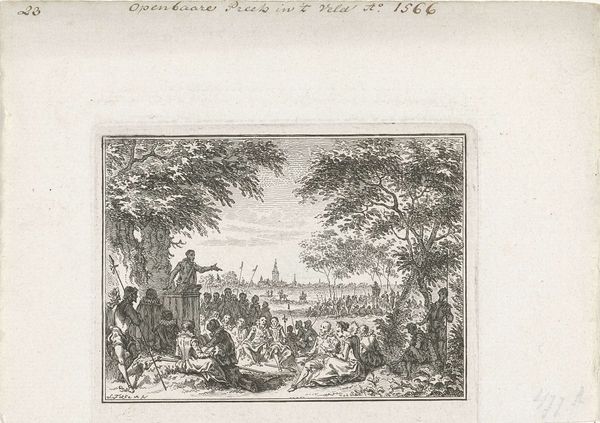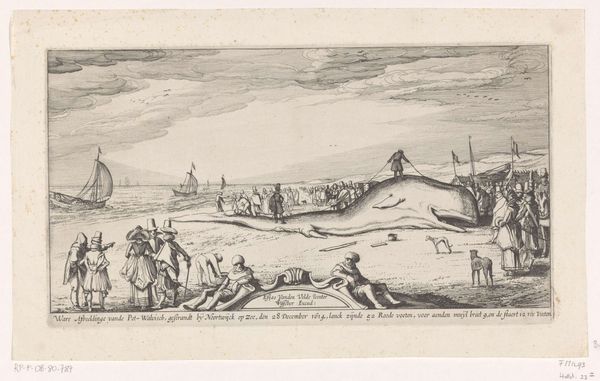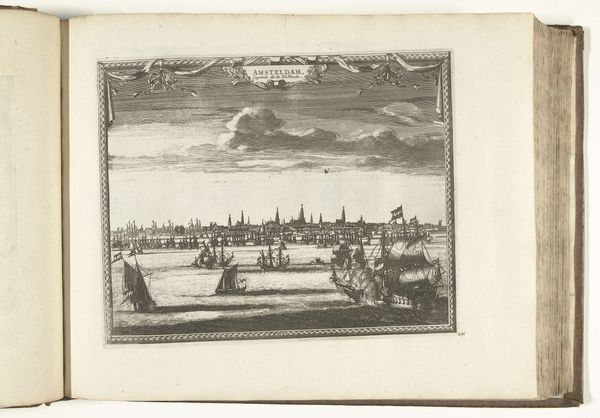
print, engraving
# print
#
pen sketch
#
old engraving style
#
landscape
#
cityscape
#
history-painting
#
engraving
Dimensions: height 84 mm, width 105 mm
Copyright: Rijks Museum: Open Domain
Curator: The Rijksmuseum holds this detailed print, entitled "Overgave van Oostende, 1604," crafted between 1782 and 1784 by Simon Fokke. Editor: There's a somber, almost subdued feeling despite the activity depicted. It’s like looking at a faded memory of conquest. Curator: It's fascinating how Fokke captured a moment heavy with historical weight through precise engraving, emphasizing the transition of power in Ostend, even using a landscape perspective to set the scene. Notice how he employs the visual symbol of the city gate, signifying control and dominion, anchoring this political history within the visual rhetoric of landscape tradition. Editor: I find it compelling to think about this 'handover' as an enforced change and the very specific ways Fokke makes sure we see who's benefiting in this transfer of power. Consider those in the small boat, overshadowed and sidelined, visually hinting at broader narratives of displacement. Curator: The image evokes that psychological dimension, hinting at individual human experience within collective historical narratives. These kinds of historic images often reflect, intentionally or unintentionally, something about power. In addition, in our mind's eye we have expectations when viewing historic imagery of seeing battle, so to not see it creates an even deeper sense of despair in this exchange of land. Editor: Precisely. And by focusing on the surrender rather than the battle, Fokke is also making a conscious statement, underscoring not just historical shifts, but also hinting at future power relations. We can ask what this print really tells us about that era’s relationship between colonial power and its subjected territories? Curator: It provokes consideration on how visual symbols become ingrained in the cultural memory, encoding deeper themes around victory, defeat, and shifting identities. Editor: Absolutely, this close viewing underscores the layered nature of the imagery. It seems that we must explore the past critically to deeply comprehend how our historical trajectories of race, gender, and colonial power inform our present. Curator: Indeed. Focusing on such symbolic details is crucial for a rich reading. Editor: These visuals push us to confront complexities beyond what is immediately depicted on the surface.
Comments
No comments
Be the first to comment and join the conversation on the ultimate creative platform.

